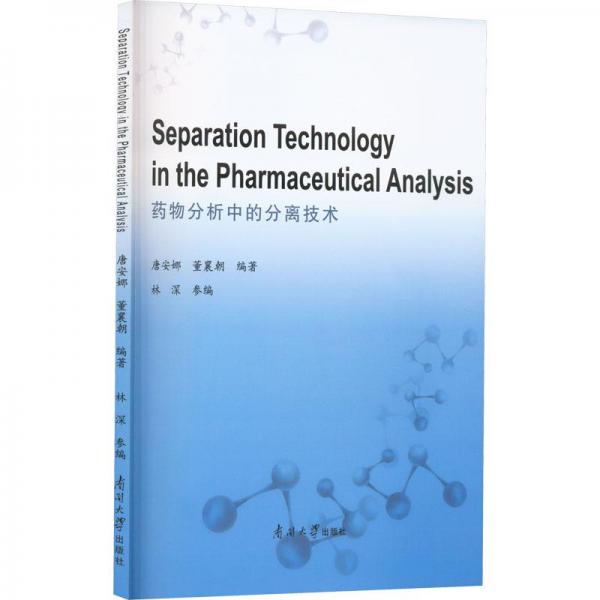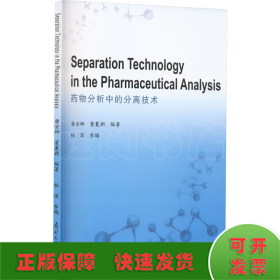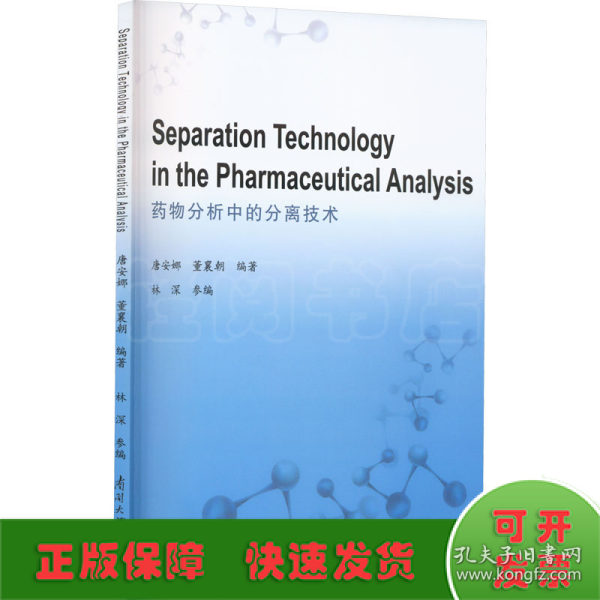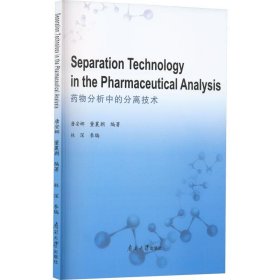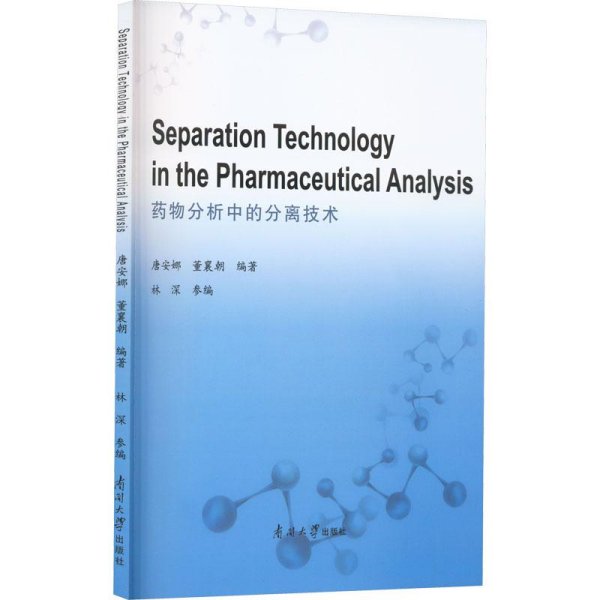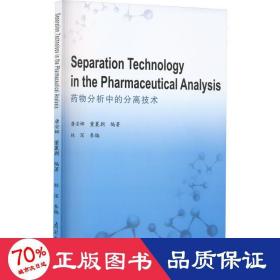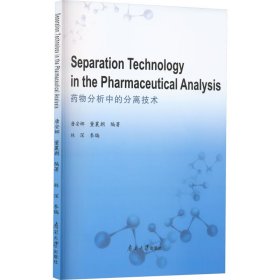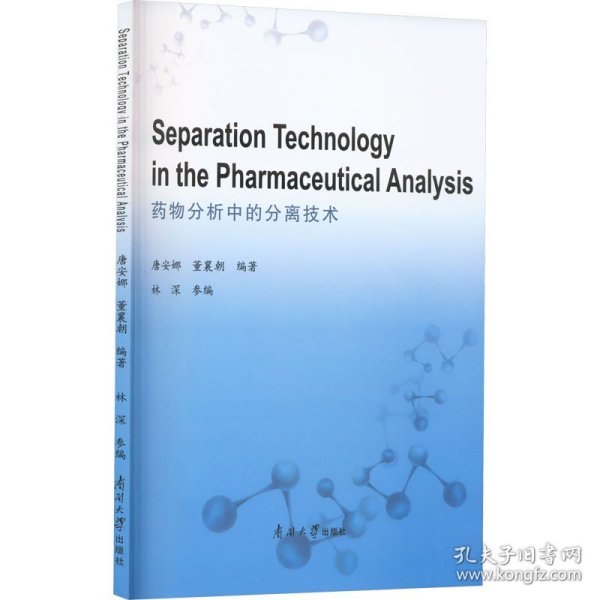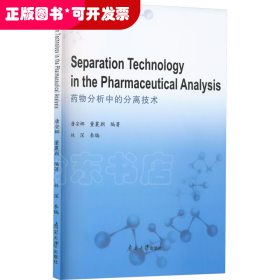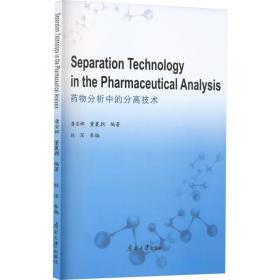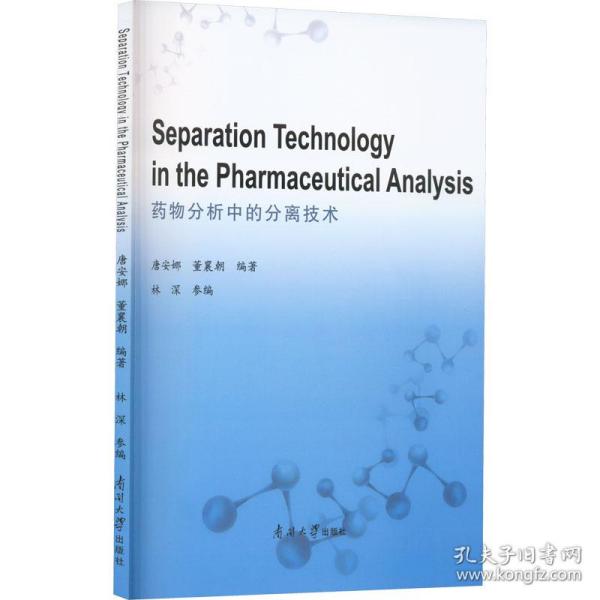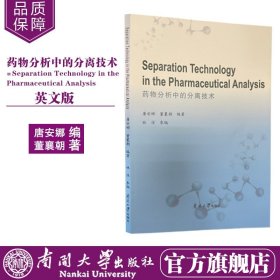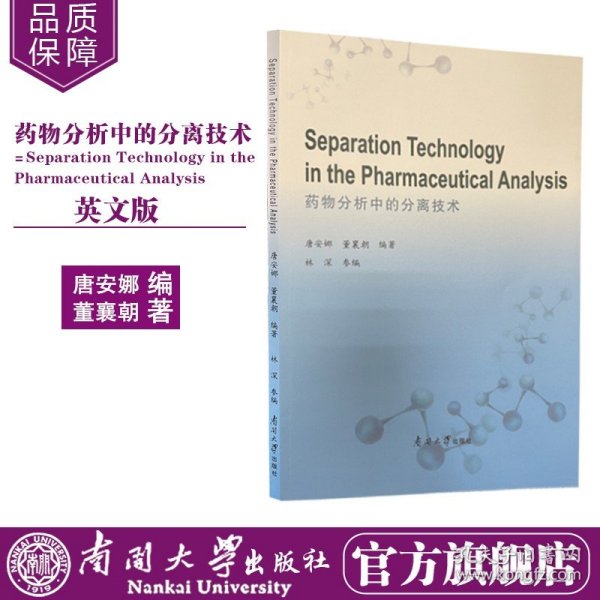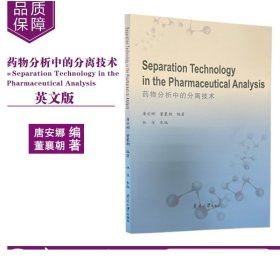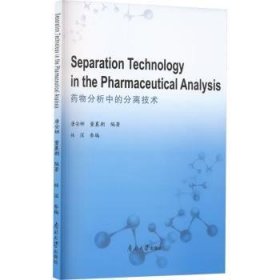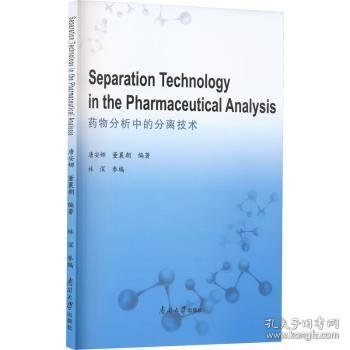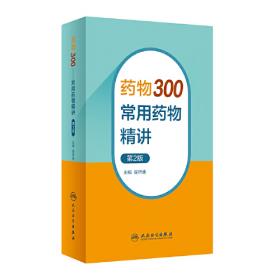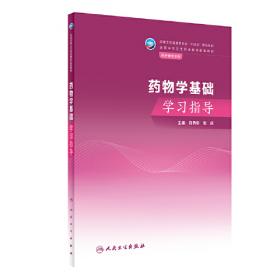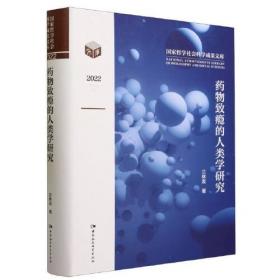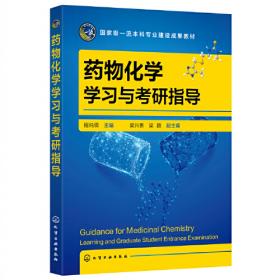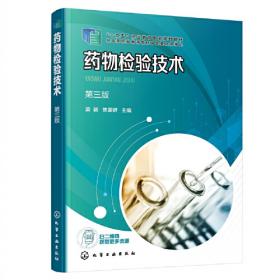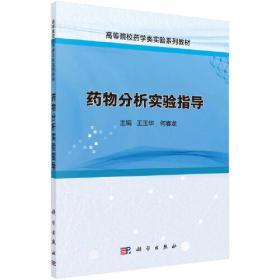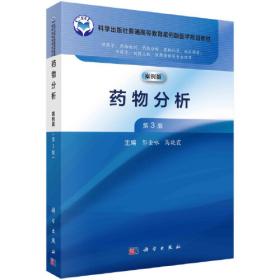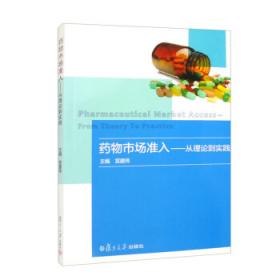药物分析中的分离技术
出版时间:
2022-11
版次:
1
ISBN:
9787310063345
装帧:
平装
开本:
16开
纸张:
胶版纸
页数:
158页
字数:
269.000千字
正文语种:
简体中文,英语
1人买过
-
This textbook is for undergraduate and graduate students who are in chemistry major and English as a second language. It is developed from the teaching material of the class: Separation Technology in the Pharmaceutical Analysis. This textbook is aimed to provide better teaching material for the students who take the class in the College of Chemistry, Nankai University and major in related disciplines.
Separation is an important part of chemical analysis. This textbook introduces the knowledge of separation technology and its application in pharmaceutical analysis. Opening of all English courses in chemistry benefits the improvement of students in both major profession and professional English.
In 2004, Professor Xiangchao Dong opened the full English class of \"separation technology in the pharmaceutical analysis\" for undergraduate and graduate students in College of Chemistry, Nankai University. It is a one semester optional course with 2 hour lecture each week. The teaching material was independently compiled by Prof. Xiangchao Dong. After about 12 years of class practice and continuous improvement, a relatively complete teaching material including chromatography and capillary electrophoresis as major parts has been formed. Dr. Anna Tang continues to teach the class after 2017 and brings new teaching ideas. Dr. Anna Tang also adds new teaching contents of separation technologies in biochemical drug, non-targeted screening analysis and new material development for pharmaceutical separations. In order to make a better understanding, Dr. Anna Tang adds questions and problems for students to study. She is also involved in the proofreading in all of the contents. 唐安娜,南开大学化学学院副教授,硕士生导师。2004.7毕业于南开大学化学学院分析化学专业,获理学博士学位并留校任教。2010.9-2011.9在美国亚利桑那大学化学与生物系做访问学者。讲授本科生《仪器分析》课程;讲授本科生、研究生《药物分析中的分离技术》课程。获校级全英文课程建设项目一项、教材建设项目一项,化学学院教材建设项目一项。已有多篇教改论文在《大学化学》《化学教育》上发表。 CHAPTER 1 INTRODUCTION TO THE PHARMACEUTIC ALANALYSIS
1.1 Nature and Tasks of Pharmaceutical Analysis
1.1.1 Pharmaceutical Analysis in the New Drug Discovery
1.1.2 Pharmaceutical Analysis to Ensure the Quality of Drug Product
1.1.3 Pharmaceutical Analysis in the Stability Studies
1.1.4 In Vivo Drug Analysis
1.2 National Standards for Supervision of Drug Quality
1.3 Significance of Separation Technology in the Pharmaceutical Analysis
CHAPTER 2 CHROMATOGRAPHIC ANALYSIS
2.1 Theoretical Principle and Parameters
2.1.1 Theoretical Principles
2.1.2 Separation Parameters
2.1.3 Theoretical Plates of a Chromatographic Column
2.2 Gas Chromatography
2.2.1 Separation Mechanism
2.2.2 GC Instrument
2.2.3 GC Columns
2.2.4 Stationary Phases in GC
2.2.5 Stationary Phases in the GSC
2.2.6 Stationary Phases in the GLC
2.2.7 Detectors in GC
2.2.8 Advantages of GC
2.2.9 Applications of GC
2.3 Introduction to Liquid Chromatography
2.3.1 Columns in HPLC
2.3.2 General Morphology of HPLC Stationary Phase Particles
2.4 Normal Phase Liquid Chromatography
2.4.1 Characteristics of Normal Phase Liquid Chromatography
2.4.2 Elution Ability of Mobile Phase
2.4.3 Applications
2.5 Reversed-phase Liquid Chromatography
2.5.1 Stationary Materials for Reversed-phase Liquid Chromatography
2.5.2 Retention Characteristic of Reversed-phase Chromatography
2.5.3 Secondary Chemical Equilibria in the Reversed-phase Chromatography
2.5.4 Applications of Reversed-phase HPLC
2.5.5 Ion-pair Reversed-phase Chromatography
2.6 Ion-exchange Chromatography
2.6.1 Separation Principle of IEC
2.6.2 Stationary Phase Materials of IEC
2.6.3 Retention of Analyses in IEC
2.6.4 Major Factors in the IEC Separation
2.6.5 Detection in IEC
2.6.6 Advantages of IEC
2.6.7 Application
2.7 Size-exclusion Chromatography
2.7.1 Separation Mechanism
2.7.2 Packing Materials for SEC
2.7.3 Applications of SEC
2.8 Affinity Chromatography
2.8.1 Nature of Affinity Interaction
2.8.2 Separation Principle of Affinity Chromatography
2.8.3 Ligand Selection
2.8.4 Selection of Supporting Materials
2.8.5 Preparation of Packing Materials for Affinity Chromatography
2.8.6 Separation by Affinity Chromatography
2.8.7 Application of Affinity Separation Technology
2.9 Thin-layer Chromatography
2.9.1 Stationary Phases Used in TLC
2.9.2 Operation in TLC
2.9.3 Performance Characteristics of TLC
2.9.4 Detection in TLC
2.9.5 Quantitative Analysis
2.9.6 Applications of TLC Analysis
2.10 Detectors in Liquid Chromatography
2.10.1 Bulk Property Detectors
2.10.2 Solute Property Detectors
References
……
CHAPTER 3 HIGH PERFORMANCE CAPILLARY ELECTROPHORESIS AND ITSAPPLICATIONIN PHARMACEUTICAL ANALYSIS
CHAPTER 4 APPLICATION OF SEPARATION TECHNOLOGYIN BIOCHEMICAL DRUG ANALYSIS AND DISEASE DIAGNOSIS
CHAPTER 5 NON-TARGETED SCREENING IN THE ANALYSIS OF COMPLEX SAMPLES WITH UNKNOWN COMPONENTS
CHAPTER 6 NEW MATERIAL DEVELOPMENT FOR PHARMACEUTICALSEPARATIONS
QUESTIONS AND PROBLEMS
INDEX
-
内容简介:
This textbook is for undergraduate and graduate students who are in chemistry major and English as a second language. It is developed from the teaching material of the class: Separation Technology in the Pharmaceutical Analysis. This textbook is aimed to provide better teaching material for the students who take the class in the College of Chemistry, Nankai University and major in related disciplines.
Separation is an important part of chemical analysis. This textbook introduces the knowledge of separation technology and its application in pharmaceutical analysis. Opening of all English courses in chemistry benefits the improvement of students in both major profession and professional English.
In 2004, Professor Xiangchao Dong opened the full English class of \"separation technology in the pharmaceutical analysis\" for undergraduate and graduate students in College of Chemistry, Nankai University. It is a one semester optional course with 2 hour lecture each week. The teaching material was independently compiled by Prof. Xiangchao Dong. After about 12 years of class practice and continuous improvement, a relatively complete teaching material including chromatography and capillary electrophoresis as major parts has been formed. Dr. Anna Tang continues to teach the class after 2017 and brings new teaching ideas. Dr. Anna Tang also adds new teaching contents of separation technologies in biochemical drug, non-targeted screening analysis and new material development for pharmaceutical separations. In order to make a better understanding, Dr. Anna Tang adds questions and problems for students to study. She is also involved in the proofreading in all of the contents.
-
作者简介:
唐安娜,南开大学化学学院副教授,硕士生导师。2004.7毕业于南开大学化学学院分析化学专业,获理学博士学位并留校任教。2010.9-2011.9在美国亚利桑那大学化学与生物系做访问学者。讲授本科生《仪器分析》课程;讲授本科生、研究生《药物分析中的分离技术》课程。获校级全英文课程建设项目一项、教材建设项目一项,化学学院教材建设项目一项。已有多篇教改论文在《大学化学》《化学教育》上发表。
-
目录:
CHAPTER 1 INTRODUCTION TO THE PHARMACEUTIC ALANALYSIS
1.1 Nature and Tasks of Pharmaceutical Analysis
1.1.1 Pharmaceutical Analysis in the New Drug Discovery
1.1.2 Pharmaceutical Analysis to Ensure the Quality of Drug Product
1.1.3 Pharmaceutical Analysis in the Stability Studies
1.1.4 In Vivo Drug Analysis
1.2 National Standards for Supervision of Drug Quality
1.3 Significance of Separation Technology in the Pharmaceutical Analysis
CHAPTER 2 CHROMATOGRAPHIC ANALYSIS
2.1 Theoretical Principle and Parameters
2.1.1 Theoretical Principles
2.1.2 Separation Parameters
2.1.3 Theoretical Plates of a Chromatographic Column
2.2 Gas Chromatography
2.2.1 Separation Mechanism
2.2.2 GC Instrument
2.2.3 GC Columns
2.2.4 Stationary Phases in GC
2.2.5 Stationary Phases in the GSC
2.2.6 Stationary Phases in the GLC
2.2.7 Detectors in GC
2.2.8 Advantages of GC
2.2.9 Applications of GC
2.3 Introduction to Liquid Chromatography
2.3.1 Columns in HPLC
2.3.2 General Morphology of HPLC Stationary Phase Particles
2.4 Normal Phase Liquid Chromatography
2.4.1 Characteristics of Normal Phase Liquid Chromatography
2.4.2 Elution Ability of Mobile Phase
2.4.3 Applications
2.5 Reversed-phase Liquid Chromatography
2.5.1 Stationary Materials for Reversed-phase Liquid Chromatography
2.5.2 Retention Characteristic of Reversed-phase Chromatography
2.5.3 Secondary Chemical Equilibria in the Reversed-phase Chromatography
2.5.4 Applications of Reversed-phase HPLC
2.5.5 Ion-pair Reversed-phase Chromatography
2.6 Ion-exchange Chromatography
2.6.1 Separation Principle of IEC
2.6.2 Stationary Phase Materials of IEC
2.6.3 Retention of Analyses in IEC
2.6.4 Major Factors in the IEC Separation
2.6.5 Detection in IEC
2.6.6 Advantages of IEC
2.6.7 Application
2.7 Size-exclusion Chromatography
2.7.1 Separation Mechanism
2.7.2 Packing Materials for SEC
2.7.3 Applications of SEC
2.8 Affinity Chromatography
2.8.1 Nature of Affinity Interaction
2.8.2 Separation Principle of Affinity Chromatography
2.8.3 Ligand Selection
2.8.4 Selection of Supporting Materials
2.8.5 Preparation of Packing Materials for Affinity Chromatography
2.8.6 Separation by Affinity Chromatography
2.8.7 Application of Affinity Separation Technology
2.9 Thin-layer Chromatography
2.9.1 Stationary Phases Used in TLC
2.9.2 Operation in TLC
2.9.3 Performance Characteristics of TLC
2.9.4 Detection in TLC
2.9.5 Quantitative Analysis
2.9.6 Applications of TLC Analysis
2.10 Detectors in Liquid Chromatography
2.10.1 Bulk Property Detectors
2.10.2 Solute Property Detectors
References
……
CHAPTER 3 HIGH PERFORMANCE CAPILLARY ELECTROPHORESIS AND ITSAPPLICATIONIN PHARMACEUTICAL ANALYSIS
CHAPTER 4 APPLICATION OF SEPARATION TECHNOLOGYIN BIOCHEMICAL DRUG ANALYSIS AND DISEASE DIAGNOSIS
CHAPTER 5 NON-TARGETED SCREENING IN THE ANALYSIS OF COMPLEX SAMPLES WITH UNKNOWN COMPONENTS
CHAPTER 6 NEW MATERIAL DEVELOPMENT FOR PHARMACEUTICALSEPARATIONS
QUESTIONS AND PROBLEMS
INDEX
查看详情
-
全新
北京市朝阳区
平均发货9小时
成功完成率96.81%
-
全新
山东省泰安市
平均发货22小时
成功完成率86.17%
-
全新
山东省泰安市
平均发货10小时
成功完成率95.34%
-
全新
湖北省武汉市
平均发货23小时
成功完成率82.8%
-
全新
北京市丰台区
平均发货7小时
成功完成率91.03%
-
药物分析中的分离技术
重要提醒:::重要提醒::所有图书保证正版,按书名发货图片仅供参考, 有疑问请咨询客服,看清书名按书名发货
全新
北京市通州区
平均发货9小时
成功完成率90.07%
-
全新
天津市西青区
平均发货14小时
成功完成率90.21%
-
全新
北京市丰台区
平均发货26小时
成功完成率87.11%
-
全新
-
全新
北京市通州区
平均发货9小时
成功完成率87.67%
-
全新
江苏省南京市
平均发货7小时
成功完成率98.3%
-
全新
江苏省南京市
平均发货7小时
成功完成率95.74%
-
全新
湖北省武汉市
平均发货15小时
成功完成率93.82%
-
全新
北京市通州区
平均发货10小时
成功完成率94.02%
-
全新
湖北省武汉市
平均发货20小时
成功完成率86.51%
-
全新
湖北省武汉市
平均发货22小时
成功完成率90.6%
-
全新
江苏省无锡市
平均发货9小时
成功完成率94.26%
-
全新
河北省保定市
平均发货14小时
成功完成率90.89%
-
全新
广东省广州市
平均发货7小时
成功完成率88.27%
-
全新
山东省泰安市
平均发货10小时
成功完成率91.13%
-
全新
江苏省南京市
平均发货16小时
成功完成率69.57%
-
全新
湖南省益阳市
平均发货46小时
成功完成率90.49%
-
全新
湖北省武汉市
平均发货21小时
成功完成率92.68%
-
全新
浙江省嘉兴市
平均发货11小时
成功完成率92.56%
-
全新
广东省广州市
平均发货9小时
成功完成率87.1%

 占位居中
占位居中

